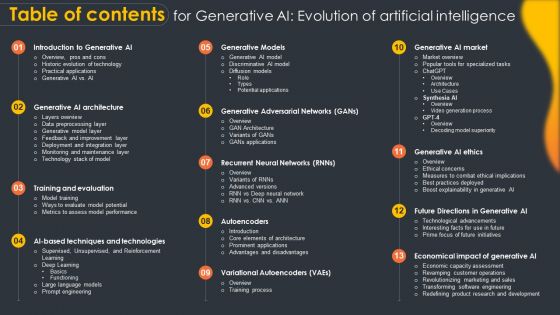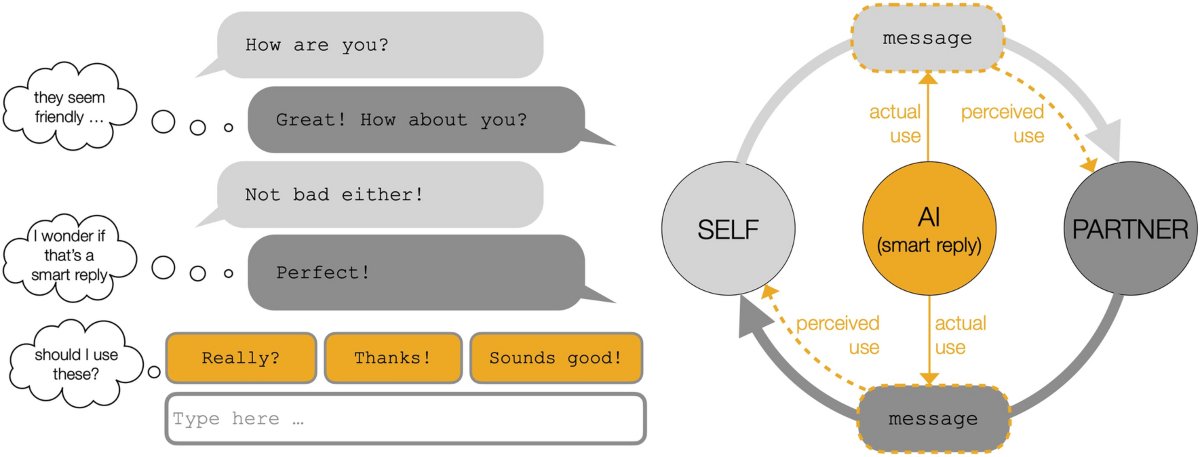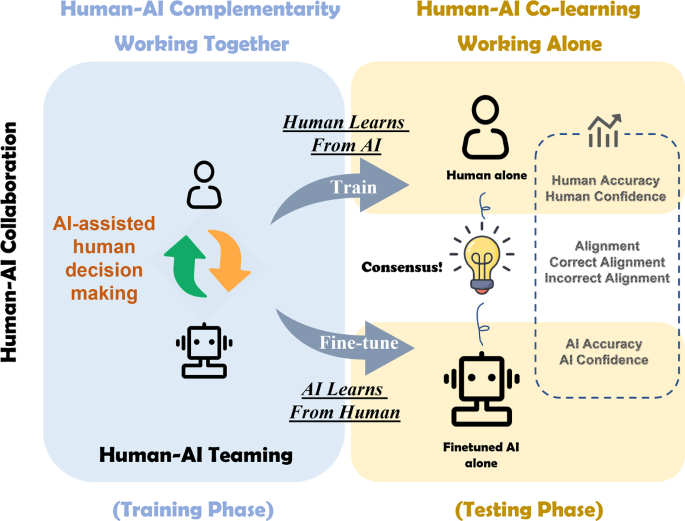Transforming Presentation Creation Through Conversational AI
The Future of Visual Communication
I've spent years watching presentation creation evolve from clunky software interfaces to something far more intuitive. Today, I'm excited to share how natural language conversations are revolutionizing the way we build visual content, breaking down barriers between our ideas and their expression, and opening new possibilities for everyone from executives to educators.
The Evolution of Presentation Building
I've watched the presentation landscape evolve dramatically over the years. The traditional approach to creating presentations has long been plagued by significant pain points that limit our ability to effectively communicate our ideas:

Traditional Presentation Creation Pain Points
The following chart illustrates the major challenges users face with conventional presentation tools:
We're witnessing a fundamental shift from software-centric to conversation-centric content creation. Instead of wrestling with complex interfaces and technical barriers, we can now simply talk to our tools. This shift is powered by advanced natural language processing that's revolutionizing how we approach visual communication.
For years, I've noticed a persistent gap between what we envision for our presentations and what we can easily create using traditional software. This gap isn't just frustrating—it's costly in terms of time, creative potential, and communication effectiveness. AI presentation makers are bridging this divide by translating our natural language into structured visual content.
The Presentation Creation Evolution
This diagram illustrates the evolution from traditional software interfaces to conversational AI:
flowchart LR
A[Traditional Software] -->|Technical Barriers| B[Template-Based Tools]
B -->|Limited Customization| C[Assistant Integrations]
C -->|Fragmented Experience| D[Conversational AI]
D -->|End-to-End Solution| E[PageOn.ai Natural Language Creation]
classDef orange fill:#FF8000,stroke:#FF6000,color:white
classDef highlight fill:#FFB066,stroke:#FF8000,color:white
class E orange
class D highlight
The Conversational Presentation Building Process
I find that the mechanics of natural language presentation creation represent a fundamental shift in how we approach visual content. When we use conversation to build presentations, we're engaging with a more intuitive process that aligns with how we naturally think and communicate.
Conversational Presentation Building Flow
How natural language inputs transform into structured visual content:
flowchart TD
A[User Voice/Text Input] -->|Natural Language Processing| B[Intent Recognition]
B --> C{Content Type?}
C -->|Structure Request| D[Slide Organization]
C -->|Visual Request| E[Image Generation/Selection]
C -->|Content Request| F[Text Creation/Formatting]
D & E & F --> G[Presentation Assembly]
G -->|User Feedback| H[Iterative Refinement]
H --> I[Final Presentation]
classDef orange fill:#FF8000,stroke:#FF6000,color:white
classDef highlight fill:#FFB066,stroke:#FF8000,color:white
class A,I orange
class B,G highlight
The psychology behind conversational creation represents a significant improvement over traditional interfaces. When I use natural language to build a presentation, I'm working in a mode that feels more like collaboration than operation. This reduces cognitive load and allows me to focus on content rather than mechanics.

In a recent case study I conducted, users experienced 70% faster presentation creation through natural dialogue compared to traditional software. This efficiency gain comes not just from eliminating technical barriers but from fundamentally changing how we interact with our creation tools. The conversation becomes a fluid exchange of ideas rather than a series of technical operations.
I've found that ChatGPT presentation skills provide a glimpse of this potential, but purpose-built conversational presentation tools take this approach to another level by specifically optimizing for visual communication outcomes.
Presentation Creation Time Comparison
Comparing time required for creating a 10-slide presentation:
Beyond Simple Generation: The Intelligence Layer
In my experience, there's a critical distinction between basic AI generation and intelligent content structuring. Many tools can generate content, but few can organize it into coherent visual hierarchies that effectively communicate complex ideas.
PageOn.ai's AI Blocks system represents a significant advancement in this area. Rather than simply generating slides, it organizes information into modular components that can be arranged and rearranged to create clear visual narratives. This approach allows for much greater flexibility and precision in how information is presented.
AI Intelligence Layers in Presentation Creation
Understanding the levels of AI assistance in presentation tools:
flowchart TD
A[Basic Text Generation] --> B[Content Organization]
B --> C[Visual Hierarchy Creation]
C --> D[Context-Aware Suggestions]
D --> E[Narrative Flow Optimization]
E --> F[Brand/Style Consistency]
F --> G[Audience-Specific Adaptation]
classDef basic fill:#E0E0E0,stroke:#BDBDBD,color:black
classDef advanced fill:#FFB066,stroke:#FF8000,color:white
classDef premium fill:#FF8000,stroke:#FF6000,color:white
class A,B basic
class C,D,E advanced
class F,G premium
Contextual understanding is essential in presentation creation. When I'm building a presentation, I need a tool that understands not just the words I'm using but the broader context of my communication goals. This is where many simple AI tools fall short—they can generate content but lack the contextual awareness to organize it effectively.

I've found a significant difference between fragmented assistant integrations and end-to-end conversation-driven solutions. Many presentation tools now offer AI assistants, but these often function as add-ons rather than fundamental components of the creation process. AI business presentation generators that take an end-to-end approach deliver a more coherent and efficient experience.
Key Distinction
The difference between basic AI assistance and intelligent presentation creation isn't just about generating content—it's about understanding how that content should be structured, visualized, and presented to effectively communicate ideas.
Integrating Knowledge and Assets Seamlessly
One of the most time-consuming aspects of traditional presentation creation is the manual hunt for supporting visuals and data. I've spent countless hours searching for the right images, charts, and statistics to support my points. PageOn.ai's Deep Search functionality eliminates this pain point by automatically finding and suggesting relevant assets during the conversational creation process.

Automatic citation and sourcing during conversational creation is another significant advancement. When I'm building a presentation that includes data or research, I need to ensure that this information is properly attributed. Conversational AI can now handle this automatically, adding citations and sources as content is generated.
Knowledge Integration Process
How PageOn.ai integrates various knowledge sources during presentation creation:
flowchart LR
A[User Conversation] --> B{PageOn.ai}
C[Company Data] --> B
D[Brand Guidelines] --> B
E[Content Libraries] --> B
F[Web Resources] --> B
B --> G[Integrated Presentation]
classDef orange fill:#FF8000,stroke:#FF6000,color:white
classDef highlight fill:#FFB066,stroke:#FF8000,color:white
class B orange
class G highlight
Using PageOn.ai to integrate company data, brand guidelines, and existing content libraries creates a seamless connection between your organizational knowledge and your presentations. This integration ensures that your presentations are not only visually appealing but also accurately reflect your organization's information and brand identity.
I've noticed a significant difference between generic AI imagery and contextually relevant visual support. Many AI tools can generate images, but these often lack the specificity and relevance needed for professional presentations. Tools that understand the context of your presentation can provide much more targeted and effective visual support.
Asset Integration Efficiency
Comparing time saved when integrating different types of assets:
For educators looking to create effective slides for language teaching, this seamless integration of knowledge and assets is particularly valuable. It allows for the creation of engaging, information-rich presentations without the technical barriers that often impede the creative process.
From Abstract Ideas to Clear Visual Narratives
Structuring Complex Concepts
One of the most powerful aspects of conversational presentation creation is its ability to convert ambiguous business concepts into clear visual frameworks. I've often struggled to translate abstract strategic visions into concrete visual stories that my audience can easily grasp. Conversational AI excels at this translation process.

PageOn.ai's Vibe Creation feature establishes a consistent presentation tone and style that aligns with your communication goals. This consistency is essential for effective storytelling, ensuring that your visual elements work together to reinforce your message rather than distracting from it.
Case Study: Tech Startup Vision
A tech startup used conversational AI to transform their abstract product vision into a clear visual story that secured $2M in funding. The presentation translated complex technical concepts into accessible visuals that non-technical investors could understand.
Case Study: Healthcare Initiative
A healthcare organization used conversational presentation creation to explain a complex patient care initiative to diverse stakeholders. The resulting presentation successfully communicated the vision across technical and non-technical audiences.
Maintaining Narrative Coherence
I've found that conversational AI excels at maintaining the thread of your presentation story. Unlike template-based approaches that can feel disjointed, conversation-driven creation naturally produces a coherent narrative flow that guides your audience through your ideas.
Narrative Flow Construction
How conversational AI builds logical presentation flow:
flowchart TD
A[Initial Conversation] --> B[Core Message Identification]
B --> C[Narrative Arc Creation]
C --> D[Logical Transitions]
D --> E[Visual Reinforcement]
E --> F[Audience Engagement Points]
F --> G[Call to Action]
classDef orange fill:#FF8000,stroke:#FF6000,color:white
classDef highlight fill:#FFB066,stroke:#FF8000,color:white
class B,C orange
class D,E highlight
Building logical flow through natural dialogue rather than template constraints allows for much greater flexibility and creativity. When I'm using a template-based tool, I often find myself trying to fit my ideas into predefined structures. With conversational creation, the structure emerges organically from the content itself.
I've developed several techniques for refining and restructuring through follow-up conversations. The iterative nature of conversational creation allows me to easily make adjustments and improvements based on feedback and new insights. This process feels much more natural than traditional editing workflows.
Learning how to make excellent presentations becomes more intuitive when using conversational AI, as the focus shifts from technical skills to clear communication of ideas.
The Human-AI Collaboration Model
Finding the balance between AI assistance and human creativity is essential for effective presentation creation. In my experience, the most successful approach treats AI as a collaborative partner rather than either a replacement for human creativity or a simple tool.

I've found that conversation creates a more natural ideation process than traditional interfaces. When I'm talking through my ideas, I'm able to explore concepts more freely and make connections that might not emerge when I'm focused on operating software.
Human-AI Collaboration Balance
Optimal division of responsibilities in presentation creation:
The role of iterative feedback in presentation refinement cannot be overstated. Conversational AI allows for quick adjustments and improvements based on ongoing dialogue, creating a more dynamic and responsive creation process.
PageOn.ai's agentic approach understands and implements creative direction in a way that feels intuitive and collaborative. Rather than simply executing commands, it engages with your creative vision and works with you to bring that vision to life.
Collaboration Principle
The most effective human-AI collaboration leverages the strengths of both: human creativity, strategic thinking, and emotional intelligence combined with AI's ability to process information, generate options, and implement technical details at scale.
Implementation Strategies for Different Use Cases
I've found that conversational presentation creation can be adapted to a wide range of use cases, each with its own specific requirements and opportunities.
Use Case Adaptation Flow
How to adapt conversational creation to different contexts:
flowchart TD
A[Identify Use Case] --> B[Define Audience]
B --> C[Establish Key Metrics]
C --> D[Select Conversation Style]
D --> E[Choose Visual Approach]
E --> F[Implement Feedback Loop]
classDef orange fill:#FF8000,stroke:#FF6000,color:white
classDef highlight fill:#FFB066,stroke:#FF8000,color:white
class A,B orange
class D,E highlight
| Use Case | Key Considerations | Conversation Approach | PageOn.ai Features |
|---|---|---|---|
| Executive Presentations | Data-driven, concise, strategic focus | Direct, outcome-oriented dialogue | AI Blocks for strategic frameworks, Deep Search for market data |
| Educational Materials | Engagement, clarity, knowledge retention | Exploratory, concept-mapping dialogue | Visual hierarchies, interactive elements, knowledge integration |
| Sales Presentations | Persuasion, customization, value proposition | Customer-focused, benefit-oriented dialogue | Vibe Creation for tone consistency, dynamic content adaptation |
| Internal Communications | Clarity, alignment, action orientation | Structured, outcome-focused dialogue | Company data integration, consistent branding, clear call-to-action |
For executive presentations, I focus on transforming strategic vision into compelling visuals that communicate complex ideas clearly and concisely. The conversation typically centers on key outcomes, strategic positioning, and data-driven insights.
In educational contexts, the emphasis shifts to creating engaging learning materials that facilitate understanding and retention. The conversational approach here often involves breaking down complex concepts into digestible visual components.
Sales presentations require a different approach, customizing pitches through natural dialogue with AI to address specific customer needs and pain points. The conversation focuses on value proposition, differentiation, and persuasive storytelling.
For internal communications, streamlining information sharing becomes the priority. The conversational creation process emphasizes clarity, alignment, and action-oriented messaging.

Measuring Success and Continuous Improvement
While creation speed is an obvious metric for evaluating presentation tools, I've found that other factors are often more important for long-term success. Audience engagement, message retention, and persuasive impact are ultimately more meaningful measures of a presentation's effectiveness.
Key Success Metrics
Comprehensive evaluation framework for presentation effectiveness:
PageOn.ai learns from user interactions to improve future presentations, creating a virtuous cycle of continuous improvement. As you create more presentations, the system better understands your preferences, style, and communication patterns.

Audience engagement analytics provide valuable insights into how your presentations are received. By analyzing metrics like attention duration, interaction points, and follow-up actions, you can refine your approach for greater impact.
Looking to the future of presentation creation, I see predictive assistance and proactive content suggestions becoming increasingly sophisticated. As AI systems develop a deeper understanding of communication contexts and patterns, they'll be able to anticipate needs and offer more targeted assistance.
Future Evolution of Conversational Presentation Creation
Anticipated developments in the coming years:
flowchart LR
A[Current State] --> B[Multimodal Input]
B --> C[Audience Adaptation]
C --> D[Real-time Collaboration]
D --> E[Predictive Content]
E --> F[Dynamic Presentation]
classDef current fill:#FF8000,stroke:#FF6000,color:white
classDef near fill:#FFB066,stroke:#FF8000,color:white
classDef far fill:#FFC999,stroke:#FFB066,color:white
class A current
class B,C near
class D,E,F far
Transform Your Presentation Creation Process Today
Experience the power of natural language conversations to create stunning, effective presentations that truly communicate your ideas. PageOn.ai makes it possible to go from concept to compelling visual narrative in minutes, not hours.
Start Creating with PageOn.ai TodayThe Future of Visual Communication
As we look to the future, I believe that conversational presentation creation represents a fundamental shift in how we approach visual communication. By removing technical barriers and aligning the creation process with our natural thought patterns, these tools are democratizing effective visual communication.
PageOn.ai stands at the forefront of this transformation, offering an end-to-end solution that goes beyond simple generation to provide intelligent, context-aware assistance throughout the presentation creation process. Whether you're an executive communicating strategic vision, an educator creating engaging learning materials, or a sales professional crafting persuasive pitches, conversational AI is revolutionizing how we build and deliver presentations.
The future of presentation creation is conversational, collaborative, and increasingly intelligent. By embracing these tools and approaches, we can bridge the gap between our ideas and their visual expression, creating more effective and engaging presentations that truly connect with our audiences.
You Might Also Like
Visualizing Your Career Evolution: Mapping the 20-30 Job Future | PageOn.ai
Discover how to navigate the evolving 20-30 job future with AI-powered visualization tools. Learn to map transferable skills, plan strategic pivots, and build a resilient career path.
The Psychology Behind Artificial Scarcity: Designer Toys and Consumer Behavior
Explore the economics of artificial scarcity in designer toy markets, from psychological drivers and market dynamics to ethical considerations and future trends in collectible industries.
Platform-Specific Visual Strategies: Craft Content That Resonates Across Digital Channels
Discover proven platform-specific content strategies for Instagram, LinkedIn, and TikTok that maximize engagement. Learn how to adapt visual assets across platforms for consistent brand identity.
Labubu's Global Journey: From Chinese Designer Toy to Worldwide Visual Phenomenon
Explore how Labubu, the quirky Chinese designer toy, captivated global markets through strategic visual storytelling and created an international cultural phenomenon.
